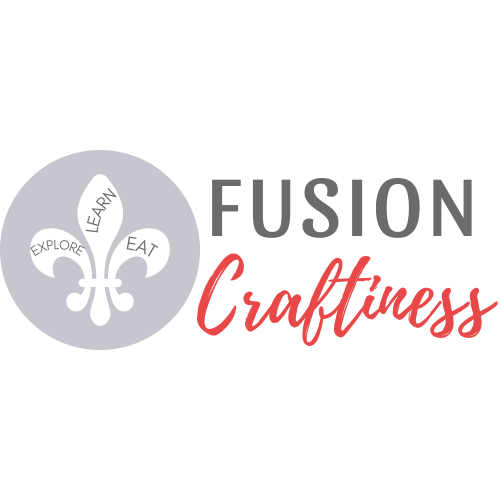Start here with this mini travel guide and get inspired while planning a trip to Ireland. This Guide to Ireland has essential details that will make planning your next adventure easier. Learn about food, lodging, language, money, sights, transportation and more!
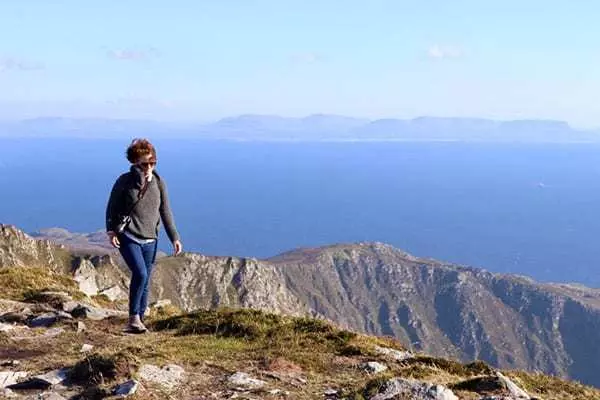
The Do’s of Visiting Ireland
- Be prepared to take LOTS of pictures. You may want to free some storage on your phone or camera.
- Tourist areas are great but go off the beaten path a little in order to explore the local areas. Find out where the locals get their coffee or take lunch. You will enjoy the local experience as well as eat cheaper.
- Keep an open mind and enjoy the experiences. A valuable part of traveling is enjoying new experiences outside of your comfort zone. You may only get three ice cubes and have to ask for water. Not a crisis.
Do NOT do This in Ireland
- Broadcast your conversation across the room. Enthusiastic Americans, Brits and Australians tend to project their voices in public spaces. In most European countries, conversations are more intimate with ‘inside’ voices.
- Don’t have sensitive ears. It is common for the Irish to use profanity as a speech emphasis. You will learn new vocabulary, it’s part of the experience.
- Express personal opinions about Irish politics to a local. Thoughtful and respectful questions may be OK but keep your opinions politely to yourself. The reason? Irish politics are robustly intertwined with its rich history. Chances are you aren’t educated enough to express a polite opinion and you will likely offend your new friend. Check out this YouTube video on why Ireland and Northern Ireland split.
Essentials Packing List for Ireland
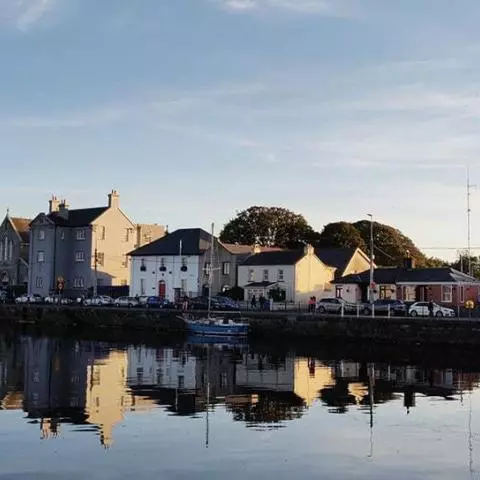
How to Pack for Ireland
An essentials packing list for exploring the Emerald Isle. When packing keep in mind your luggage situation. It is best to travel with a carry-on rolling suitcase and a backpack. You will be surprised at how little you actually need and be much happier when transferring to planes, trains, buses and automobiles.
Materials
- 1 carry-on suitcase
- 1 backpack
- quart size plastic bag
Tools
- This How to Pack for Ireland List
Instructions
- PERSONAL
Medications in their original container
Small First Aid Kit - band aids, antibiotic ointment, mole skin, sunscreen, lip balm, anti-diarrhea medication, pain reliever, allergy medication
Headphones/ear buds
Gum or mints
Hygiene - feminine hygiene, hand sanitizer, deodorant, gold bond powder, shampoo, conditioner, hand lotion or vaseline, baby wipes, tissues, toothbrush, toothpaste
A little reading material or puzzles to entertain you while on planes and trains. Movies and TV entertainment is now common on most trans-Atlantic flights. You won't need as much reading material as you think you will. - CLOTHING
Long pants - 2 pairs
Long Sleeve Shirt - 2
Short Sleeve Shirt - 2
Socks - 4 pairs
Undergarments - 4
PJ's
Bathing Suit
Flip Flops (use as slippers, shower shoes, casual shoes) - PAPER
Passport as well as a copy of the front page of your passport. If you lose your passport, you will need this at the embassy.
Travel insurance paperwork if using.
Medication list with dosages and Medical Insurance card. - TECH STUFF
Chargers for all of the electronics you are bringing.
Cell Phone. If you have a smart phone you won't need to bring a laptop. You should be able to do everything on your smart phone with apps and using the internet with free wifi or your international plan.
Power Converter - MISC
Compact re-usable bags, handy for shopping and misc adventures.
Re-usable water bottle. Fill up at your lodging and at airports. - WEATHER
Small umbrella
Rain jacket
Hiking shoes or other sturdy shoes
Hat, scarves, gloves, buff
Warm hat, think knitted or fleece
Base layer top
Fleece top
Notes
You may bring a quart-sized bag of liquids, aerosols, gels, creams and pastes in your carry-on. These may be limited to 3 oz. or less per item. Place these in your backpack or outer pocket of your rolling carry-on suitcase to expedite the screening process.
TSA requirement change often so keep up to date at TSA.gov.
.
Customize this list for yourself. This is a good strong base for packing. Keep in mind, you should limit yourself to a rolling carry-on suitcase and a backpack.
Recommended Products
As an Amazon Associate and member of other affiliate programs, I earn from qualifying purchases.
-
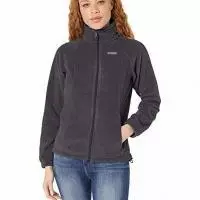 Columbia Women's Benton Springs Classic Fit Full Zip Soft Fleece Jacket
Columbia Women's Benton Springs Classic Fit Full Zip Soft Fleece Jacket -
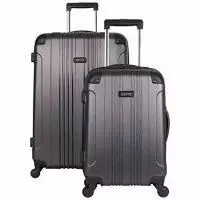 Kenneth Cole Reaction Out Of Bounds 2-Piece Lightweight Hardside 4-Wheel Spinner Luggage Set: 20" Carry-On & 28" Checked Suitcase
Kenneth Cole Reaction Out Of Bounds 2-Piece Lightweight Hardside 4-Wheel Spinner Luggage Set: 20" Carry-On & 28" Checked Suitcase -
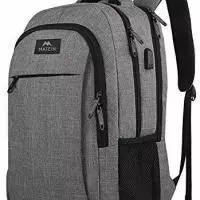 Travel Laptop Backpack,Business Anti Theft Slim Durable Laptops Backpack with USB Charging Port,Water Resistant College School Computer Bag for Women & Men Fits 15.6 Inch Laptop and Notebook, Grey
Travel Laptop Backpack,Business Anti Theft Slim Durable Laptops Backpack with USB Charging Port,Water Resistant College School Computer Bag for Women & Men Fits 15.6 Inch Laptop and Notebook, Grey -
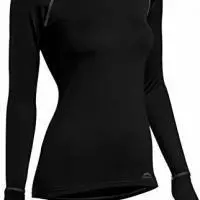 ColdPruf Women's Quest Performance Base Layer Long Sleeve Crew Neck Top, Black
ColdPruf Women's Quest Performance Base Layer Long Sleeve Crew Neck Top, Black -
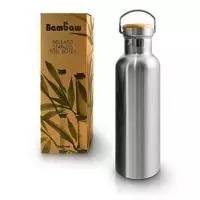 Bambaw Insulated Water Bottle | Stainless Steel Water Bottle 25oz | Eco Friendly Reusable Bottle | Leakproof and Plastic Free Metal Water Bottle| Keeps Hot and Cold Drinks | Eco Water Bottle
Bambaw Insulated Water Bottle | Stainless Steel Water Bottle 25oz | Eco Friendly Reusable Bottle | Leakproof and Plastic Free Metal Water Bottle| Keeps Hot and Cold Drinks | Eco Water Bottle -
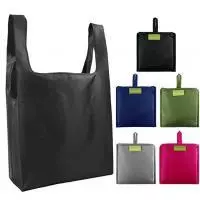 Reusable Bags Set of 5, Grocery Tote Foldable into Attached Pouch, Ripstop Polyester Reusable Shopping Bags, Washable, Durable and Lightweight (Black,Navy,Pink,Moss,gray)
Reusable Bags Set of 5, Grocery Tote Foldable into Attached Pouch, Ripstop Polyester Reusable Shopping Bags, Washable, Durable and Lightweight (Black,Navy,Pink,Moss,gray) -
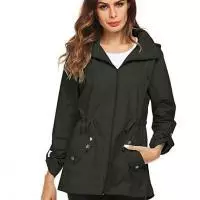 Raincoat Women Waterproof Outdoor Active Mesh Lining Hooded Rain Trench Jacket
Raincoat Women Waterproof Outdoor Active Mesh Lining Hooded Rain Trench Jacket -
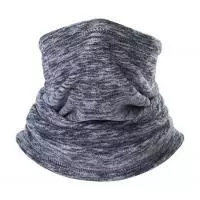 QINGLONGLIN Neck Warmer Gaiter, Polar Fleece Ski Face Mask Cover for Winter Cold Weather & Keep Warm
QINGLONGLIN Neck Warmer Gaiter, Polar Fleece Ski Face Mask Cover for Winter Cold Weather & Keep Warm -
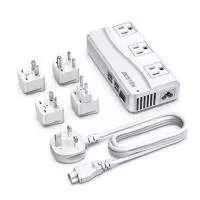 BESTEK Travel Adapter with UK Plug Universal 100-220V to 110V Voltage Converter 250W with 6A 4-Port USB Charging 3 AC Sockets and EU/US/India/AU Adapter for Worldwide use (White)
BESTEK Travel Adapter with UK Plug Universal 100-220V to 110V Voltage Converter 250W with 6A 4-Port USB Charging 3 AC Sockets and EU/US/India/AU Adapter for Worldwide use (White)
Travel Skills While Planning a Trip to Ireland
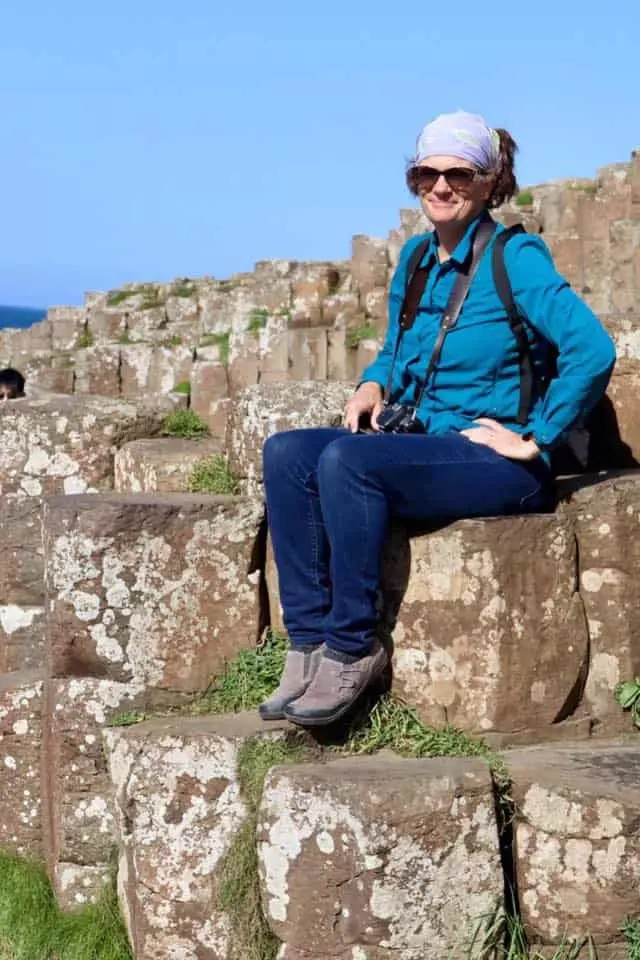
Lodging
There are several great options for lodging when traveling in Ireland. What is right for you is a matter of your comfort zone, budget and willingness to try something new.
Bed & Breakfasts
These are a great option for many reasons. Most are run by in-residence owners which lends to a more intimate experience. The character of the B & B often reflects the character of the owner. They are also a valuable resource for information on the area and are glad to dole out recommendations.
This type of lodging as well as hostels are the most affordable options. Shop carefully, read reviews and enjoy the savings.
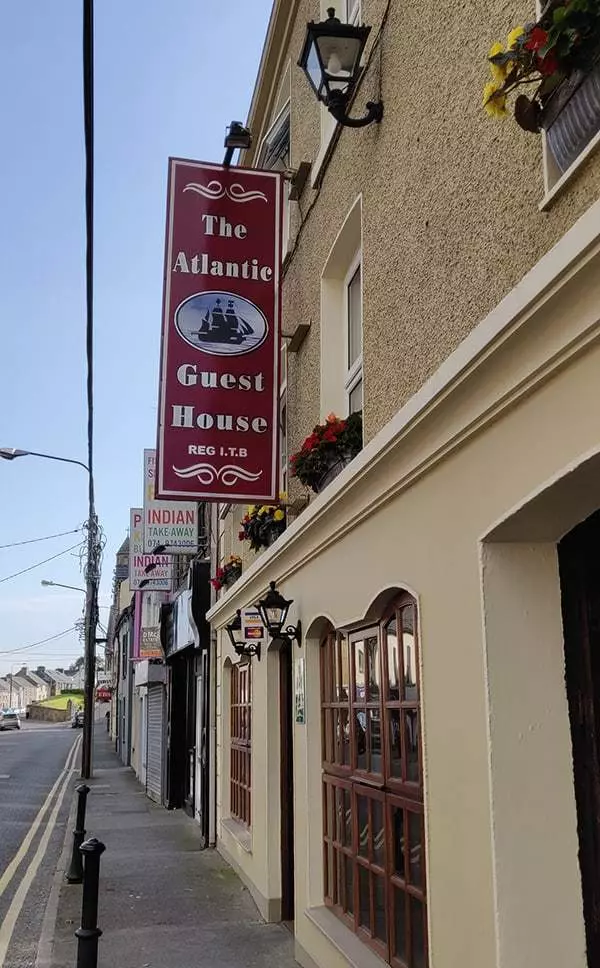
It is polite to let the owners know approximately what time to expect you the day before. This allows them to plan their day and ensures your room is ready. In order to support these proprietors, it is often best to book directly. This saves the owners roughly 20% that middle entities charges them. It is customary to reserve over the phone or online and then pay the full amount at the time of stay.
What you should know about B & B’s.
- Check to see the payment options beforehand. Some only take cash.
- Most have in-residence owners. In order to accommodate travelers, they wake when you wake and sleep when you sleep. It is polite to let them know when you expect to arrive the day before. There usually is not a 24 hour desk to accommodate every need or whim so it is best to plan accordingly.
- Twin means 2 single beds. Double means one double bed. Clarify to be sure.
- En Suite bath means the bathroom is inside the room. Private bath means the bathroom is all yours but it may be down the hall. Standard bath means you will be sharing a bathroom with others down the hall. Worth to note that most rooms have a sink inside the room.
- Bathrooms rarely have wash cloths.
- Top sheets are rare. It is common to have a fitted sheet, comforter, pillow and pillow case.
- Sometimes they can accommodate children with portable children’s beds.
- Most B & B’s are clean but modest with minimal amenities. TV’s, in-room appliances and telephones are not common. Wifi is common but may only be available in the lobby. Decor and ambience differs greatly.
Flats
This is my favorite mode of lodging when traveling. I like to travel slow by staying in one place for 3-4 days and use a flat as my base for exploring. This allows me to experience shopping in local markets with the added benefit of eating in, saving me money.
I also have the time to sample different eateries by browsing the neighborhood over several days.
Most come with a washing machine and indoor clothes line allowing me to pack lighter by doing laundry often. Lastly, when traveling with others, you can have some private space and spread out a little in these small flats.
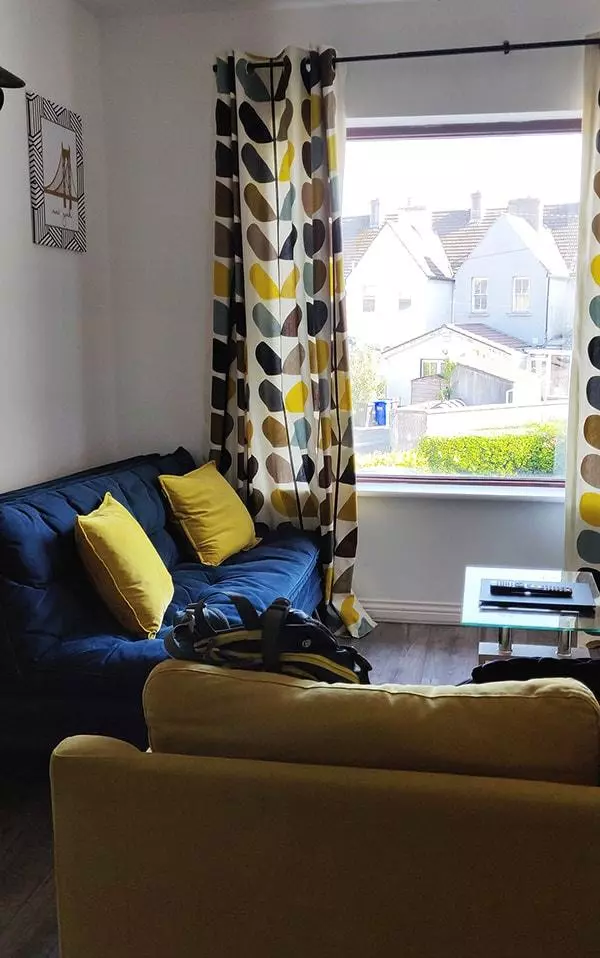
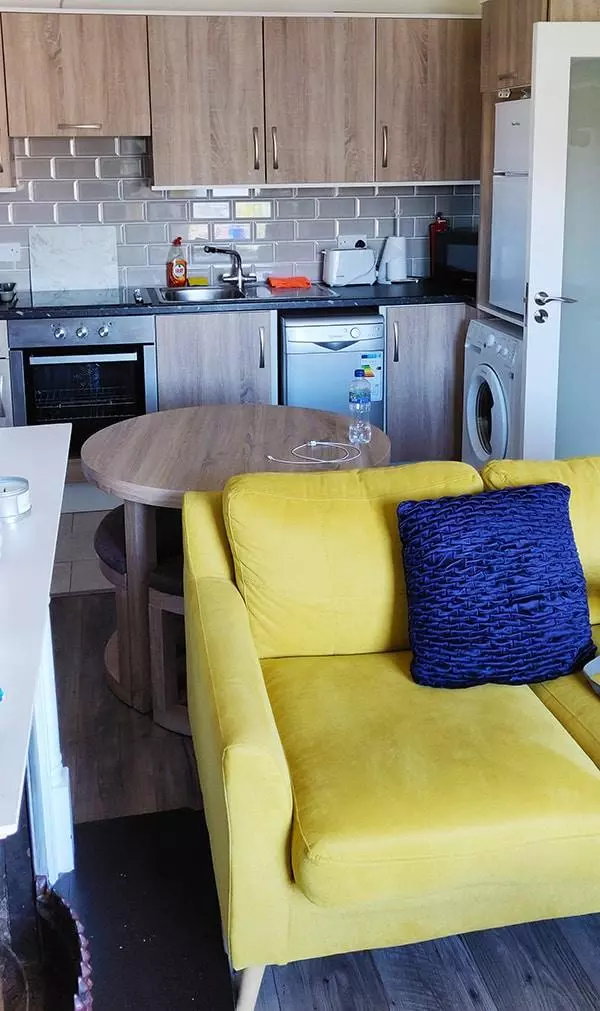
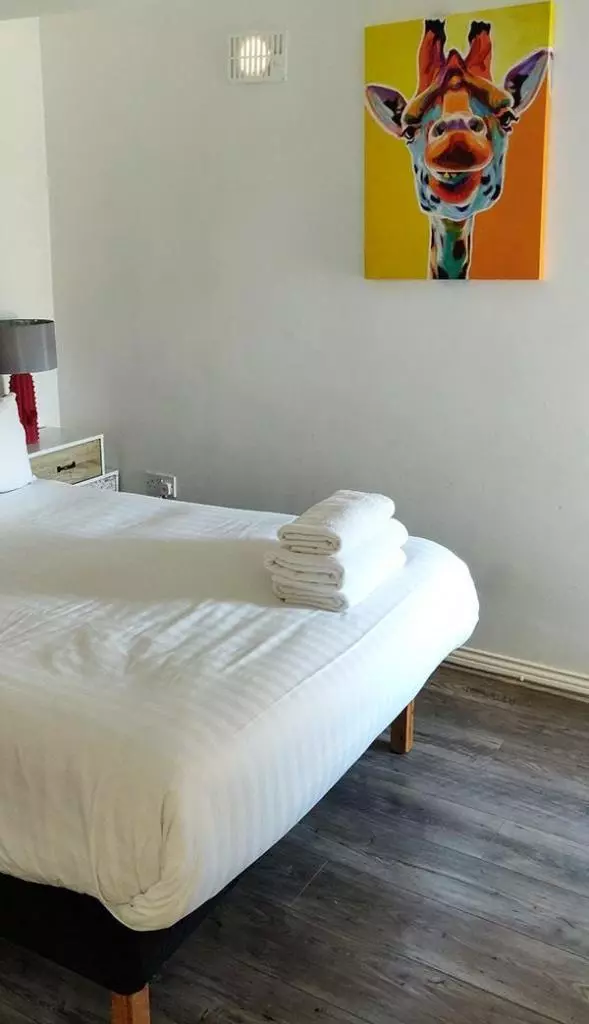
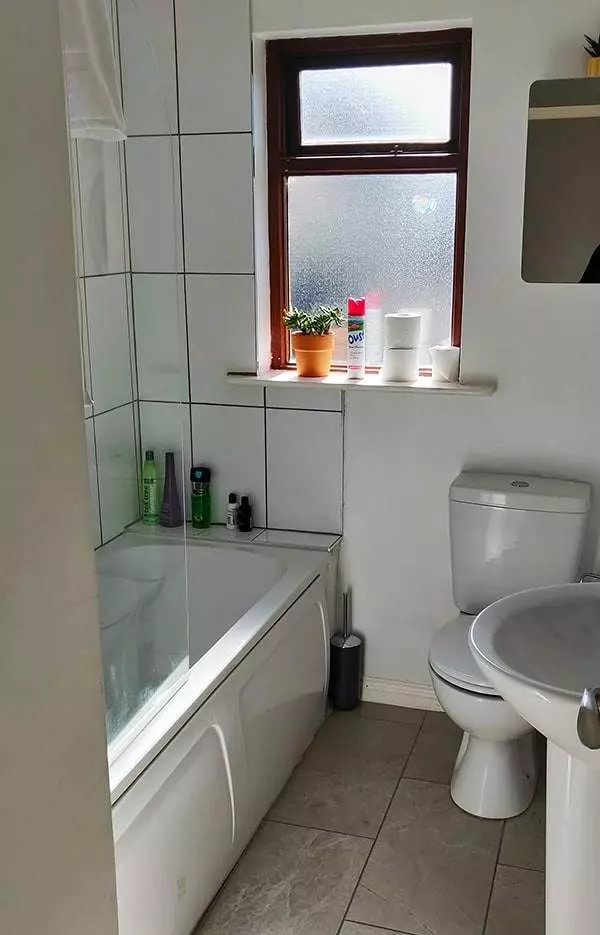
There are many online options for renting flats. I only have experience with AirBnB but there are others including VRBO, HomeAway and FlipKey.
I have had positive experiences with no unpleasant surprises. AirBnb’s rating system has been a valuable resource when choosing rentals. I only rent from one that has more than eight ratings and no less than 4.5 stars. I also read the actual reviews which give clues as to the overall stay as well as amenities close by such as markets and such. Rentals in sketchy areas will usually have interesting reviews so it pays to actually read them.
Hotels
This option usually cost a little more than renting a flat but is an easy way to secure lodging. Hotels have predictable amenities and usually have a restaurant in them. En-suite bathrooms are common and usually have more amenities. This is ideal for somebody that doesn’t want to get outside their comfort zone too much and desire something more predictable with more conveniences.
Hostels
This is my favorite way to meet other like-minded travelers. Hostels aren’t just for young adults. The last one I stayed at in Dublin had travelers of all ages.
You can go for the cheap open-dorm style bunkbeds with strangers or a private room with two twin beds and an en-suite bath. We stayed at the modern Jacobs Inn in Dublin. Our twin room with en-suite was perfect for us. They also have ‘pods’ which are more private than the usual bunkbed and very cheap.
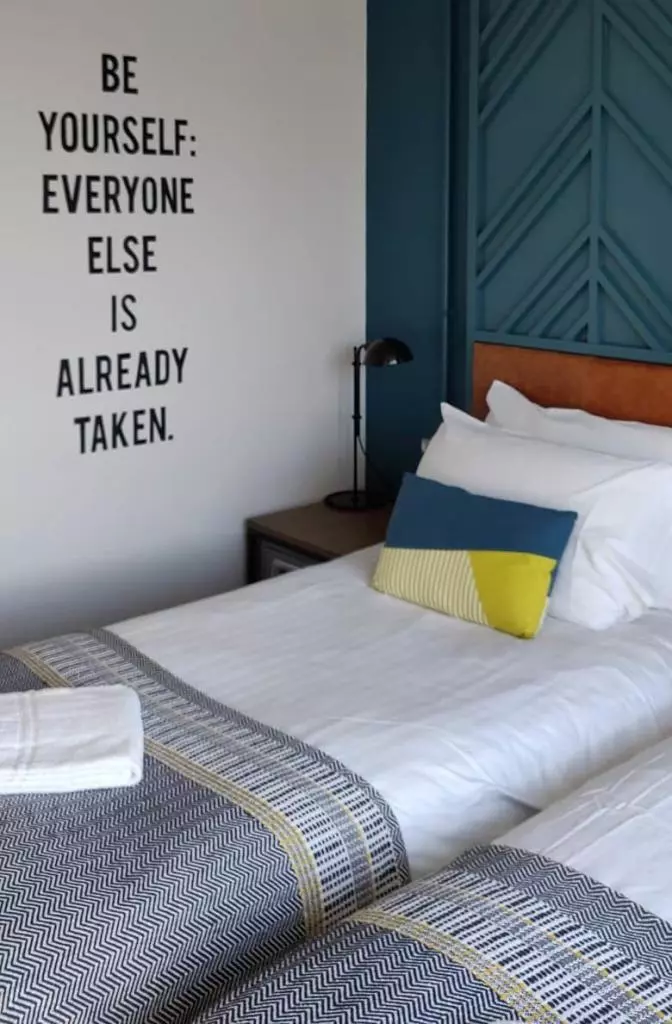
Transportation
For comprehensive transportation information check out www.DiscoverIreland.ie and select ‘Getting Around’ at the bottom of the webpage. Here you will find valuable information for all of your transportation needs (1).
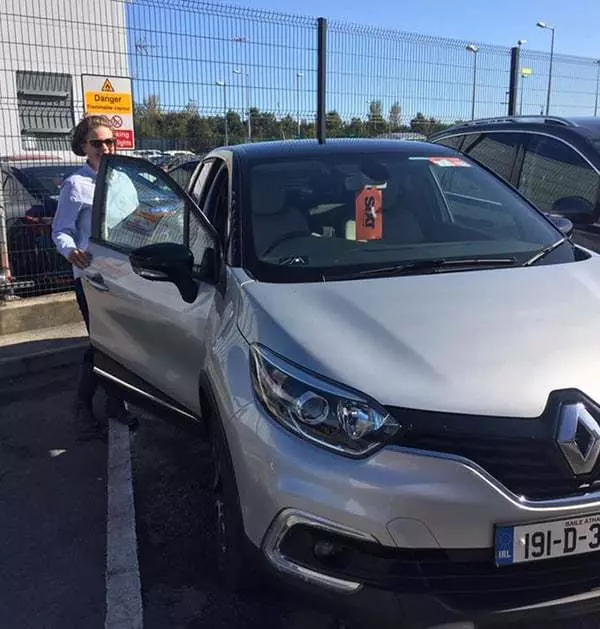
Navigating
Check out your App Store for offline maps you may use without service.
Also, take advantage of free wifi whenever possible. You may use Google maps to plot your next course to use offline. Simply plot your course when you have wifi, turn to airplane mode and then do not turn off the app.
Alternatively you can purchase international cell coverage from your phone company. My travel partner purchased a plan for $10/day.
Car
In order to visit the amazing countryside, consider renting a car. This will give you the most flexibility and a lot of sights are not near the rail system.
Note that your U.S. car insurance probably doesn’t cover rentals outside of the U.S. and territories. You have the option of buying CDW (Collision Damage Waiver). It is probably MUCH cheaper to purchase this at the time of the rental and not wait until you arrive. Be sure to READ all of the fine print online.
I have had two friends get socked with a surprising bill at the check-out counter with ‘extra fees’ which I assume were because they didn’t purchase the CDW beforehand. I personally purchased the CDW at the time of rental online and didn’t have any surprising charges at checkout.
Some credit cards will cover a car rental outside of the U.S. but it is not common. Be sure to check with your credit card company and pay special attention to the details. This can save you a significant amount of money.
Common Extra Charges With Car Rentals
- Dropping off car at a different location than pick-up.
- Taking the car into Northern Ireland.
- Extra drivers fee.
- Lower deductible on Collision Damage Waiver.
- Renting a car with automatic transmission.
If you do want to use your credit card for insurance coverage, check out this couples experience renting a car in Ireland.
For great tips on driving in Ireland, check out Global Treks video on how to drive in Ireland. They have great tips on navigating with GPS too.
Train
Trains in Ireland seem to diverge out of Dublin like a spokes on a wagon wheel. This means you may need to fill in gaps to get to certain places with bus fares. Train and car travel are much faster than bus travel so keep that in mind when planning your transportation.
For the Republic of Ireland check out Irish Rail for train connections. For Northern Ireland check out Trans Link.
Bus
For city buses, try your Google Maps App. Remember to plan ahead of time if you are relying on free wifi. Also, ask your busker, waiter or fellow cafe patron for advice on the local bus system. This method has helped me every time I reached out to the local experts.
- Open Google Map App
- Input your destination
- Select directions
- Select starting point
- Select bus option at the top
- Your bus number and times of departure should populate
Food
Eating is part of the experience of traveling. To eat where the locals eat, you will have to look outside of the tourist areas. The food is better and cheaper so it’s definitely worth searching for those obscure gems. Try going out of the tourist area a few blocks and search for more modest establishments.
In pubs it is common to order and pay for your food and drinks at the bar, then sit down. They will bring the food to you. Pubs are a great way to sample traditional Irish food.
Food at pubs is cheaper than most restaurants and is generally where the locals hang out. Many have rooms to rent above the pub and is a great way to save money and have an authentic experience. On the weekends though, it can be quite loud.
Don’t look for a beer menu, there aren’t any. Look at the beautiful long taps at the bar to make your ale selection. A lot of Irish beer are cask ales. They are fermented in wooden casks and have a different mouth feel with less carbonation and are generally served room temperature.
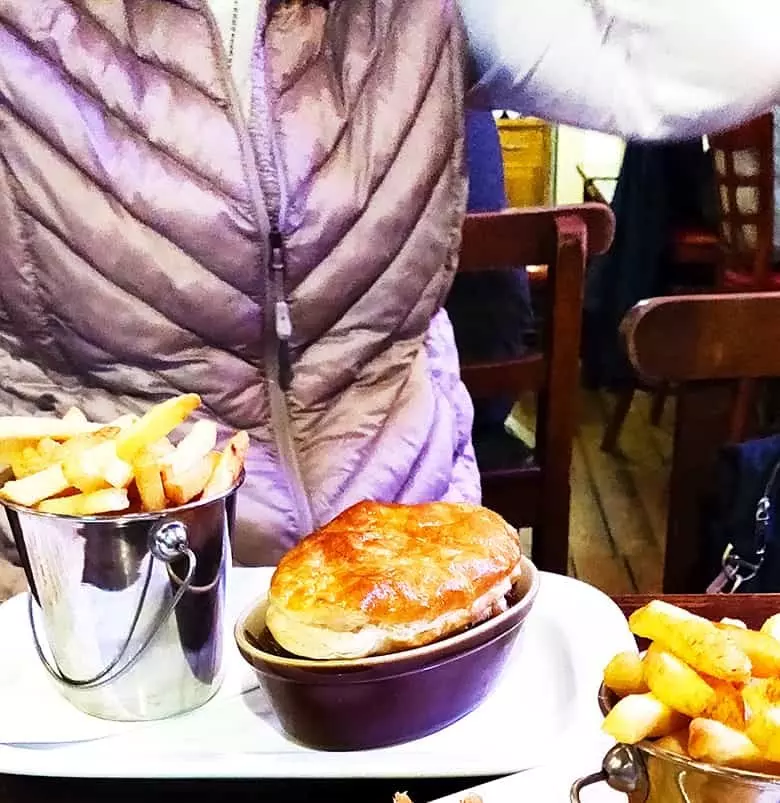
Tipping isn’t common. Most of the time there wasn’t a spot for tipping on our charge receipts. We witnessed one server perplexed as to what to do with a 5 euro tip.
Save money and time by picnicking your lunch. Our favorite items from the local market included baguettes, cheese, charcuterie, fresh fruit, yogurt, carrots and hummus. One time it was raining so we simply had lunch in the car. We did venture out at dinner time in order to sample as much Irish cuisine as we could find. We also saved money by eating yogurt with muesli for breakfast.
One breakfast experience we did enjoy was a ‘Full Irish Breakfast’ also known as a Full Ulster breakfast in the North. This hearty fare included juice, coffee or tea, cereal, eggs, bacon, sausage, a grilled tomato, sautéed mushrooms and black pudding. The B & B where we were staying offered this and we indulged.
When you get home, remember you can enjoy traditional Irish food at home. Check out my recipes for Traditional Irish Food and whip some tasty treats for your family.
Money
You have several options for payment in Ireland. Government policy in recent years has made it easier to use plastic in Ireland (2).
Just a decade ago, cash was king. One of the many charming characteristics of Ireland is that small businesses are more common than in the U.S. When you hand over money for goods or services, you are face to face with the CEO of your lodging, eatery, souvenir shop etc.
For sole proprietor establishments like these, accepting plastic was costly. Thanks to changes in Irish government policy and the advent of digital wallets, barriers to success have been lifted a wee bit.
Change is constant, it will suit you to pay attention to the payment method of the goods and services you wish to patronize.
Below is a list of the three most common transaction methods in Ireland.
CASH (7%) – There was a time recently when you could only operate in cash at the average consumer level. Though recent changes have made it easier to use plastic, it is still common to use cash at small level transactions such as buses, cafes, restaurants, parking etc. Though recent changes have made it easier to use plastic, cash is still very welcome at higher level transactions.
Remember to alert your bank that you are traveling. You can use your American debit card in the ATM machines. Most Irish ATM machines charge a fee, usually per transaction but sometimes percentage. Be sure to withdraw larger amounts versus many small amounts to decrease your fees. Also check with your bank about International fees.
You will receive Euros in the Republic of Ireland and Irish Pounds Sterling in Northern Ireland. If you are planning on traveling to Scotland, be aware they have Scottish Pounds Sterling. As long as your Irish Pounds are ‘Sterling’ they will generally accept it in Scotland.
CARD (60%) – Although most places now accept credit cards in the tourist areas, if you venture to small villages you may have difficulty finding establishments that will take plastic. Be sure to check your lodging reservations to see what type of payment they accept.
DIGITAL WALLET (21%) – Google, Amazon, Paypal and Apple provide this service. I prefer cash when traveling but if you aren’t comfortable with carrying cash, this may be a great option for you. An app is needed on your smartphone and you can just scan and go.
West Ireland
Galway

Galway, is a harbour city on Ireland’s west coast. The city’s hub is 18th-century Eyre Square, a popular meeting spot surrounded by shops and traditional pubs.
Around 10pm you can generally find live Irish music in this area. Nearby cafes, boutiques and art galleries located in stone-clad historic buildings line the winding lanes of the Latin Quarter, which retains portions of the medieval city walls.
Galway has a rich past of international trade and Viking raids. Wealthy merchants built tower houses which were designed to defend against the Vikings and other opposing forces. These houses started small with primitive defenses and then improved upon.
Aughnanure Castle started with one floor and a small walled courtyard with lookouts. Over time they added floors and expanded their courtyard. This allowed them to protect their livestock and their home. This castle is well preserved and well worth the five euro fee.
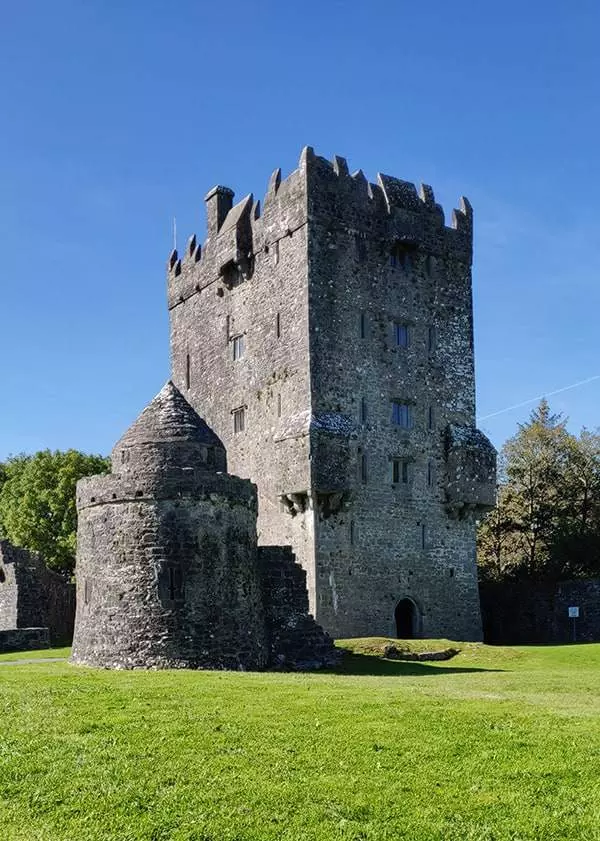
Things to DO & SEE in and around Galway
- The TI (Tourism Info is one block from the bus/train station) 21 Forster Street. Great info about touring around Galway.
- Eyre Square and surrounding streets for shopping, eating, pub-ing and people watching.
- City Museum – The 11th most popular free attraction in Ireland. Three floors of beautiful exhibits in archaeology, history and sea science.
- The Quays Pub – Historic drinking establishment in the heart of Galway’s Latin Quarter.
- Monroe’s Tavern – For live music and craic.
- The Crane Bar – For live music and Celtic storytelling (May-October on Tuesdays 10 euros). This two story establishment has nightly traditional Irish music downstairs as well as booked gigs upstairs.
- Galway Walking Tours
- Galway Food Tours
- Claddagh Art Museum (Katie’s Cottage) – Visit an accurate recreation of a traditional Claddagh house with the option of having tea and scones in a beautiful setting.
- Trad on the Prom – Remember Riverdance? It all started here.
Where to STAY in Galway
- Petra House
- Balcony B&B
- Asgard Guest House
- AirBnb
Where to EAT in Galway
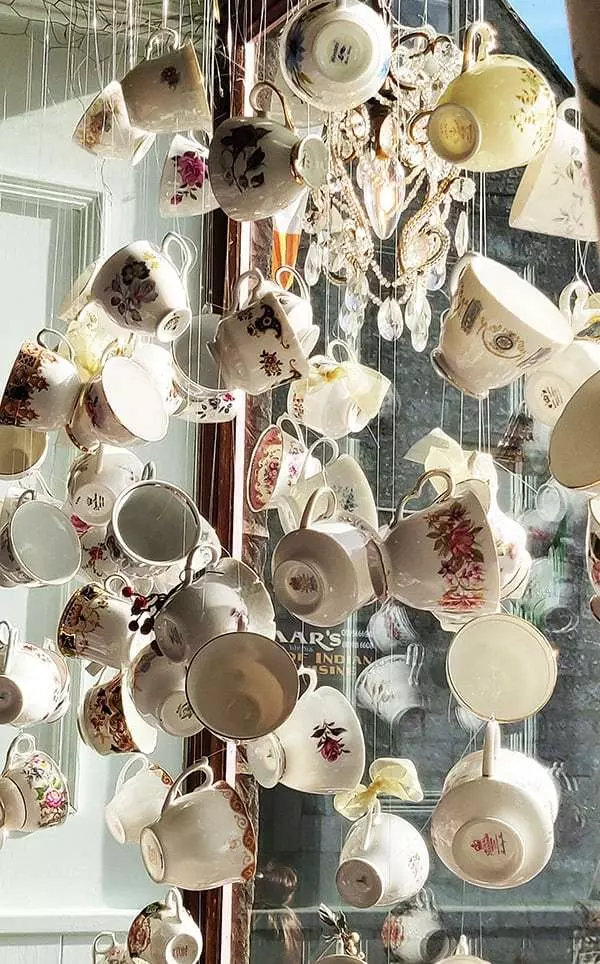
Besides eating in pubs $$, there are never ending places to eat in Galway.
- For Terroir cuisine with a Michelin Star – Aniar $$$ (53 Lower Dominick Street).
- For Farm-to-Table fare in a beautiful setting in an old stone warehouse with amazing river views – Ard Bia at Nimmos $$$ (Located at the Spanish Arch).
- For seasonal traditional-meets-fusion cuisine – Kai Cafe and Restaurant $$$ (22 Sea Road).
- For fresh Fish & Chips (and other seafood) – McDonaghs Fish & Chips $ (22 Quay Street). Note the ‘Chipper’ on one side has the cheaper fare. The sit-down restaurant is about 4 euro extra.
- For Vegetarian fare – The Lighthouse Vegetarian Cafe $$ (8 Abbeygate Street Upper, behind Lynch’s Castle).
- For all of your picnicking needs – Joyce’s Supermarket $ (Where Father Griffin Road meets Munster Ave).
- For an authentic tea experience – Cupan Tae $$ (8 Quay Lane)
Slieve League on The Wild Atlantic Way
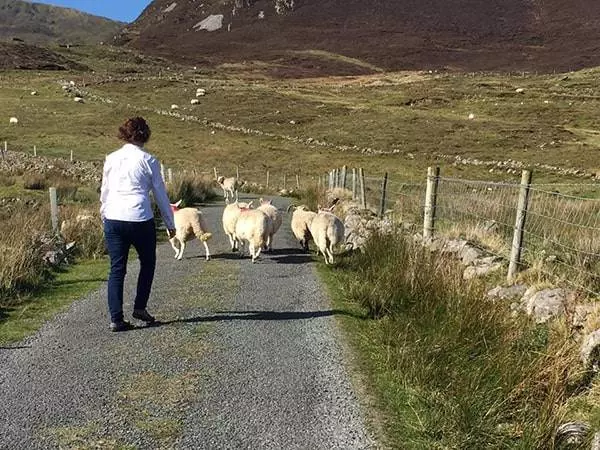
The Wild Atlantic Way was my favorite way to explore Ireland. It is 1,600 miles long and is one of the longest coastal routes in the World. It runs the entire west coast of Ireland. Where the wild Atlantic meets Europe you will finding charming old villages, amazing views, great food, castles, pubs, shops etc. Everything is here, even sheep.
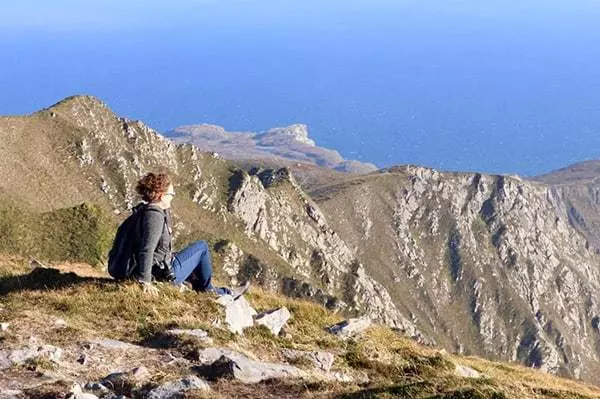
We stayed the night in Galway and Donegal which are on this route. We also drove out to Slieve League for a moderate hike up to the top. There is also an easier way to the top where you drive around and park your car.
The drive from Donegal to Slieve League was the most beautiful of the drives we enjoyed.
Irelands Languages
The national language of the Republic of Ireland is Irish (also known as the Celtic language of Ireland), not English (3). It is a Celtic family language and there are seven dialects in the Republic. It has spread with migration and there are many more dialects spreading into Scotland and the Isle of Man.
Irish is the first language in counties Galway, Kerry, Cork and Donegal and in smaller areas throughout Ireland. English is taught as a second language.
We didn’t have any trouble finding English speakers but I have been told there are a few people who only speak Irish, not English.
Have you been to Ireland?
Leave a comment below. Where did you go, eat, see? We want the deets! If you go in the future, tag us on Instagram #FusionCraftiness so we can live vicariously through your amazing travels!
Wishing you a rainbow
An Irish Wish
For sunlight after showers—
Miles and miles of Irish smiles
For golden happy hours—
Shamrocks at your doorway
For luck and laughter too,
And a host of friends that never ends
Each day your whole life through!
